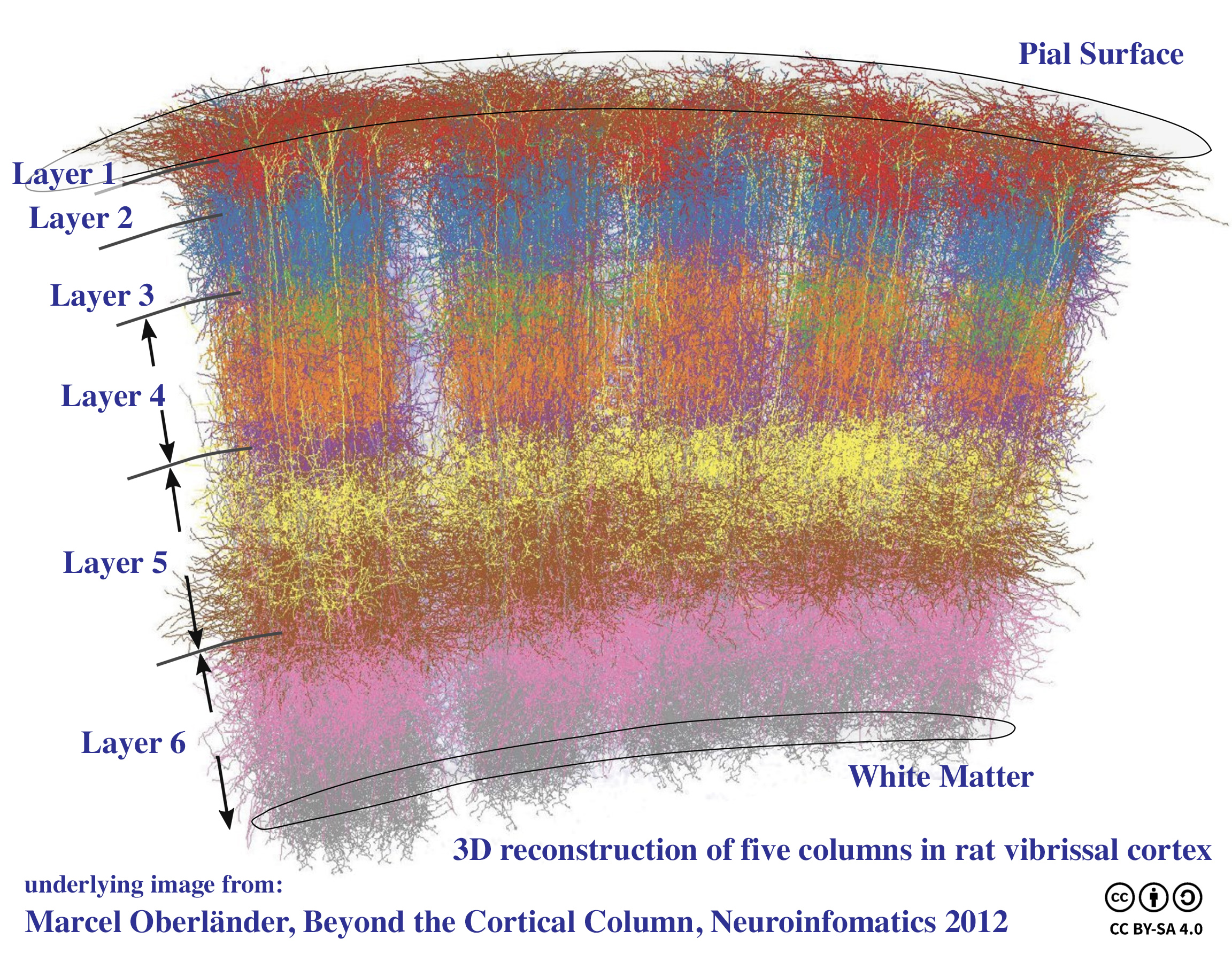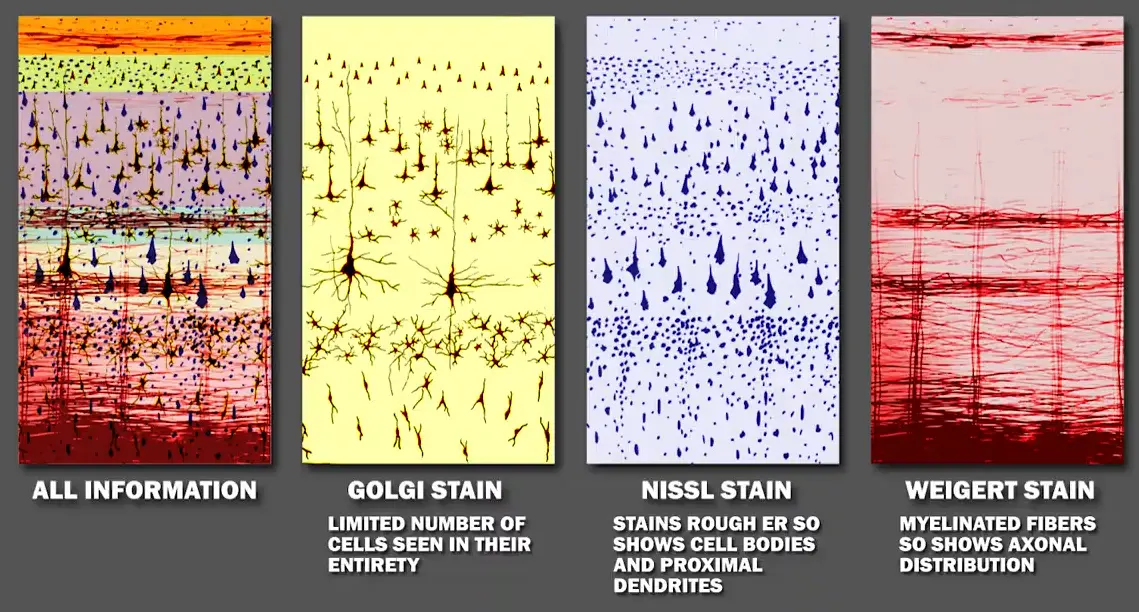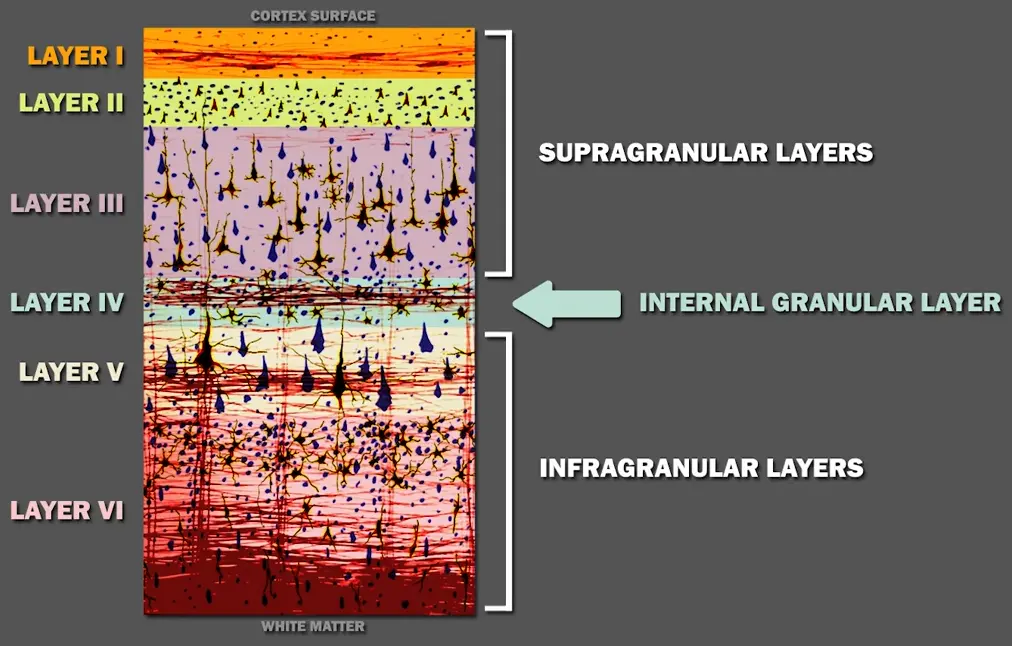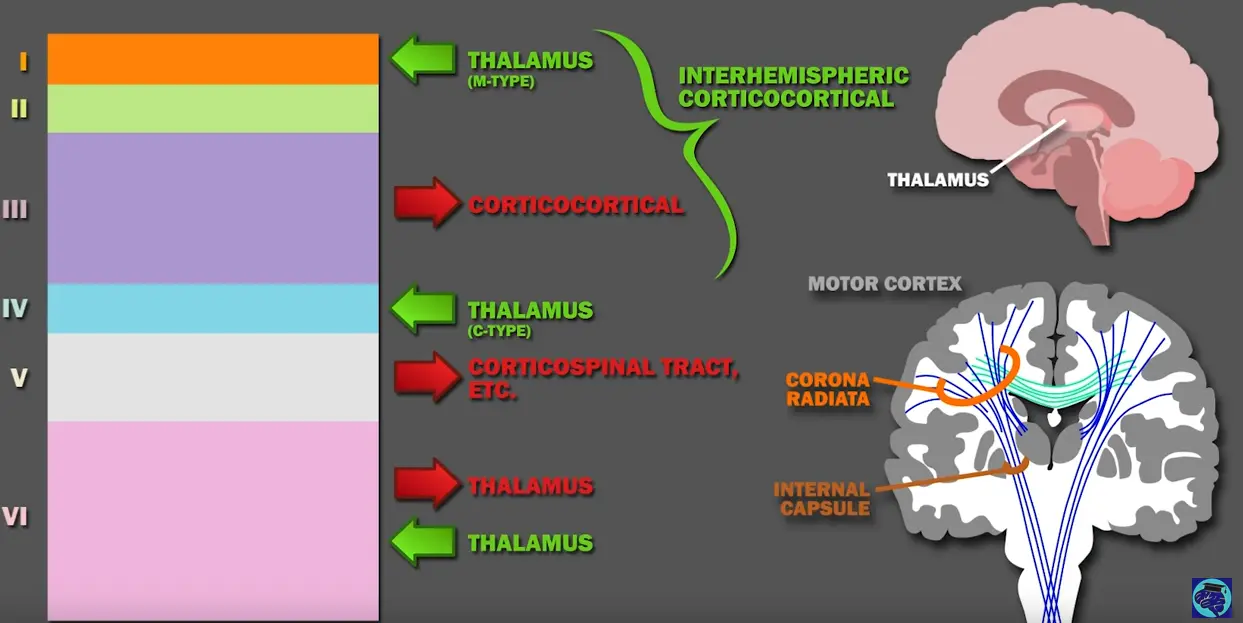
These are about 2mm tall and 1mm wide.

Link to originalHigh level “voting process” among cortical columns
When presented with some stimuli, e.g. touching something with our eyes closed, the corresponding cortical columns each propose a set of objects that they think might be body is dealing with. With more time, e.g. when you touch the object from different directions etc., their probabilistic guess can be improved.
NOTE: The brain is not dealing with probabilities, but with sets sets of possibilities and “unions”.
In certtain layers of these columns, there are long-range connections. These send the projections across the brain. That’s where the voting among all the different columns which deal with different sensory inputs, at different layers, etc. occurs. They can all quickly agree if there is a single best answer → crystalization of the vote.
A similar process is happening at a lower level with the neuron firing process.
Link to originalNeuronal voting processes
Whether the postsynaptic cell fires or not is a matter, in part, of whether EPSPs prevail (it fires) or IPSPs prevail (it doesn’t). It’s like a little cellular democracy “taking a vote” from all these input neurons, many of them saying “Fire! Fire! Fire! and many of them saying “Don’t fire! Don’t fire! Don’t fire!
To take a concrete example: Say you’ve been cooking on an electric stove top. You’ve turned the coil off so it’s not glowing red anymore. You accidentally touch it while you’re preparing your other food, and it’s hotter than you expected so you jerk your hand back. At various levels of your neuromuscular system, you had neurons voting Fire! to activate your flexor muscles to contract—even if the burner wasn’t actually hot enough to harm you. (Better safe than sorry.)
But then, you’re just brewed a cup of hot tea. You pick up that teacup to take a sip, and it’s actually hotter than that stove top was. Yet you put it to your lips and take that sip anyway. Your fingertips and your lips were sensing that unusual heat, yet at some level of the brain there are IPSPs inhibiting your withdrawal reflex so you don’t jerk back from the teacup or drop it. Those synapses were voting Don’t fire! because you had higher-level cerebral input voting on their “knowledge” that you’ve learned since childhood that this isn’t hot enough to harm you, and you were expecting it to be hot.
Cortical Layer structure
6-layered cortical columns can be found in the cerebral cortex of the mammalian brain.
Other animals like reptiles and birds have structures that might resemble the cerebral cortex, however, a sheet with neurons containing 6-layers can only be found in the mammalian brain.
Layers work together, with strong reciprocal connections, “forming an inhibition-excitation balance that control the current state of the brain.”
NOTE: Not every part of the cortex has 6 layers, which helps us differentiate them in their functions.

Layer 1: “Molecular layer”
Layer 1 only contains a small amount of neurons (~0.5% of neurons in the layers).
Mostly consists of axons and dendrites from pyramidial neuron from other layers in the same or different regions.
Also contains glial cells.
The few neurons in L1 are all inhibitory.
Receive input from thalamus, and other intra and inter-cortical areas.
Main function: Integrate cross-modal information (horizontal fibers visible in a weigert stain).
Layer 2&3: External granual layer & External pyramidial layer
L2 and L3 are closely related / sometimes hard to disentangle.
L2 contains small pyramidal (granule) neurons.
L3 contains medium-sized pyramidial neuron.
L2&L3 receive cortical input to a large part from the other hemisphere (interhemispheric connections).
There are also small inhibitory cells in both layers.
L2 has proportionally slightly more inhibitory cells than L3
Input comes from distal (far away) and local L4 pyrmidal cells
Output goes mostly to L5
Layer 4: Internal granular layer
Mainly receives sensory input (visual, somatosensory, auditory, …) from the thalamus. Receives the “what” signal.
L4 is thicker in sensory areas (particularily “V1”).
Some additional input from intercortical regions.
Mostly pyramidial neuron and stellate neurons.
Strong output connections to L2 and L3 neurons.
Can be seen as the main input layer.
Layer 5: Internal pyramidal layer
Made up of large pyramidal neurons (betz cells).
Input mostly from L2 and L3.
Main output to other cortical areas and the corticospinal tract.
Motor cortex neurons that project to muscles originate in L5.
Can be seen as the main output layer, communicating “movement” information to their neighbours in layer 6.
Layer 6: Multiform layer
This is the deepest layer. Made up of grid cell-like neurons encoding positional information in a coordinate system of the column’s “sensor” (the thing it’s predicting / modelling).
It contains a variety of neurons, such as. pyramidial neuron, stellate neurons, …
Reciprocal connections with the thalamus, which can be both inhibitory and excitatory.
Theory: This reciprocal loop augments or weakens thalamic activity (“gain control”, Olsen et al., 2012).
Neuron count
Macrocolumns / hypercolumns contain approximately 60,000 to 100,000 neurons; diameter
Minicolumns / Microcolumns - the smallest repeating unit - contain about 80-100 neurons; diameter.
Estimates vary by cortical area and species. Some areas have a thicker layer IV, for example.
Link to originalNCA's might be a perfect candidates for modelling cortical columns
This might stand in stark contrast to biological neurons, especially to cortical columns in the human neocortex. The neocortex is formed by an integrated 2D grid of copies of the same neuronal circuit, the cortical columns, which have been argued to be capable of learning arbitrary concepts of our reality (objects, animals, other human beings, mental constructs, etc.). More importantly, these cortical columns might literally “model” the learned concepts and thus represent interactable reference frames or world models for relevant features of our Umwelt.
Remembering would thus trigger models of past experiences, and thinking would translate not only into a navigation process through an associative conceptual space, but dynamically construct a network of interacting world models that are relevant under a certain context. NCAs might be excellent candidates to model such an architecture: they maintain a trainable ANN in each cell of an integrated grid which are in principle capable of representing reference frames of arbitrary concepts. In turn, NCAs might not only be excellent models for biological self-organization as a multi-scale competency architecture, but even for higher-level cognitive processes of the human neocortex such as active perception, raising fascinating questions about the parallels of morphogenesis and cognition.

